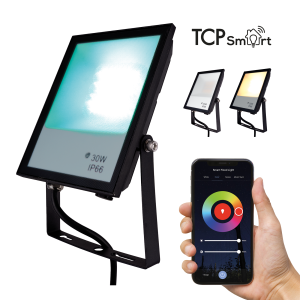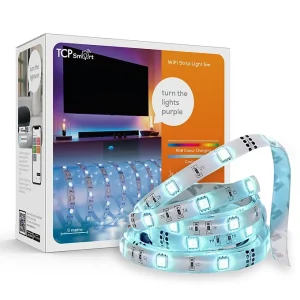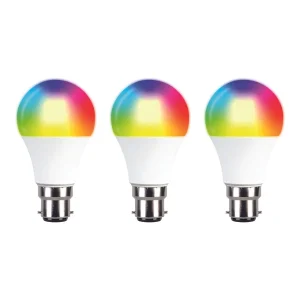Imagine a lighting system that adapts to your lifestyle—turning on when you arrive home, dimming to set the perfect evening mood, and saving energy without you even thinking about it. Smart lighting is revolutionizing the way we experience and control our spaces. But what exactly makes it so powerful and practical? In this article, we will explore how this cutting-edge technology works and why it’s becoming a must-have for modern living.
What is smart lighting?
Smart lighting is a modern lighting system designed to provide greater control, convenience, and energy efficiency through automation and remote management. Unlike traditional lighting, smart lighting systems can be controlled via mobile apps, voice assistants, or sensors, allowing users to adjust brightness, color, and even schedule lighting changes based on their preferences or routines. These systems often integrate with smart home ecosystems, enabling lights to react dynamically to environmental factors like time of day or occupancy, ultimately enhancing both comfort and energy savings.
Types of smart lighting
There are several types of smart lighting, each designed to cater to different needs and preferences within a smart home system:
- Smart Bulbs – These replace traditional light bulbs and can be controlled wirelessly to adjust brightness, color, and scheduling. They are often compatible with voice assistants and mobile apps. Smart bulbs are easy to install and offer an entry-level solution for automating home lighting without changing existing fixtures.
- Smart Light Switches – These replace standard wall switches, allowing users to control both smart and non-smart bulbs remotely. They are ideal for households wanting a centralized control option using wireless technology. Smart switches are perfect for controlling multiple lights on a single circuit, reducing the need to upgrade every individual bulb.
- Smart LED Strips – Flexible lighting options that can be placed under cabinets, around ceilings, or behind TVs to create ambient lighting. They can display multiple colors and are often used for decorative purposes, especially when paired with smart hubs. Many smart LED strips offer customizable lighting effects, ideal for creating a unique atmosphere for entertainment spaces or holiday decor.
- Smart Lamps – Standalone lamps with built-in smart features, perfect for adding a stylish yet functional light source to a room. These often come with voice control and app connectivity via Bluetooth or Wi-Fi. Smart lamps are especially convenient for bedside or workspaces, providing adjustable lighting without needing to touch a switch.
- Motion-Sensor Lights – Designed for security or convenience, these lights turn on automatically when motion is detected. They’re often used in entryways, garages, or outdoor areas. In addition to enhancing security, motion-sensor lights can help save energy by only activating when necessary.
- Smart Outdoor Lights – Weather-resistant lights designed to enhance outdoor spaces, such as patios or driveways. They can be programmed to turn on at sunset, increase brightness for security, or create mood lighting for outdoor events. Many smart outdoor lights come with additional features like adjustable brightness, remote monitoring, and integration with security systems.
- Smart Ceiling Fixtures – Integrated smart ceiling lights that offer advanced control options, from dimming to color changes. These smart lighting solutions are often used in living rooms, kitchens, and other common areas. They provide even, overhead lighting and can often be set to follow daily routines, such as gradually dimming in the evening to support healthy sleep cycles.
Benefits of smart lighting
Smart lighting offers a range of benefits that go beyond traditional lighting systems, making homes more efficient, comfortable, and secure:
- Energy Efficiency – Smart lights help reduce energy consumption through features like dimming, motion detection, and scheduling. By automatically turning off when not in use, they help lower electricity bills. In addition, many smart lights use energy-saving LED technology, which consumes significantly less power than traditional incandescent bulbs and lasts much longer.
- Convenience and Automation – With remote control via mobile apps, voice assistants, or automation schedules, users can easily manage their lighting from anywhere. This eliminates the need to manually adjust lights and enhances convenience for daily routines. For example, users can schedule smart light bulbs to gradually brighten in the morning to simulate a natural sunrise, or to turn off automatically when they leave the house.
- Customization and Ambience – Smart lighting allows users to personalize their lighting setup with adjustable brightness, color options, and lighting effects. This is ideal for creating specific moods or enhancing experiences, such as movie nights or social gatherings. Some systems even allow users to set different lighting zones for each room, providing precise control over the atmosphere throughout the house.
- Enhanced Security – By automating outdoor and indoor lights, smart lighting can deter intruders by simulating occupancy even when residents are away. Features like motion sensors add an extra layer of protection by illuminating areas when movement is detected. Additionally, integration with security cameras and alarms can improve monitoring, with lights activating when cameras detect suspicious activity.
- Integration with Smart Home Systems – Smart lighting can integrate with other smart devices, such as security cameras, thermostats, and home assistants. This creates a seamless smart home experience where multiple systems work together to optimize energy use and comfort. For instance, smart lights can adjust based on room temperature, automatically dimming to reduce heat output during warmer months.
- Improved Well-being – Many smart lighting systems offer “circadian lighting” options, which adjust brightness and color temperature to mimic natural daylight cycles. This can help regulate sleep patterns, reduce eye strain, and boost mood and productivity. Bright, cool lighting can help users stay alert during work hours, while warm, dim lighting in the evening can promote relaxation and better sleep.
- Cost Savings Over Time – Although smart lighting may have a higher upfront cost, energy savings, longer-lasting LED bulbs, and reduced maintenance requirements contribute to long-term savings. Reduced energy use and the ability to minimize unnecessary lighting through automation can quickly offset initial investments, making smart lighting a cost-effective solution over time.
Conclusion
Smart lighting is more than just a tech upgrade; it’s a long-term solution for convenience, energy efficiency, and enhanced well-being. With various options to fit different needs, from smart bulbs to motion-sensor lights, it offers unparalleled control over home environments. As technology continues to evolve, investing in smart lighting can lead to a safer, more comfortable, and cost-effective future for your home.







